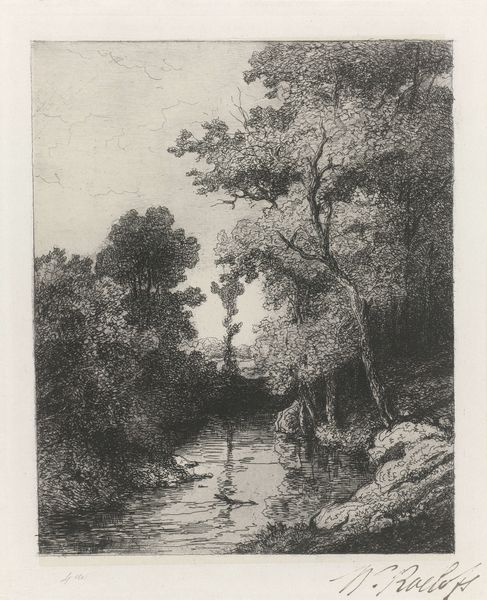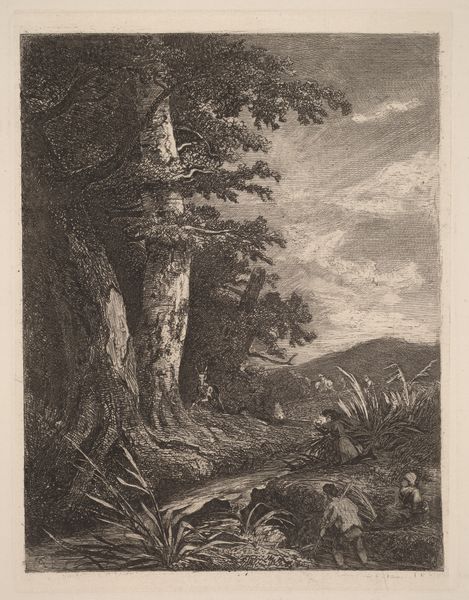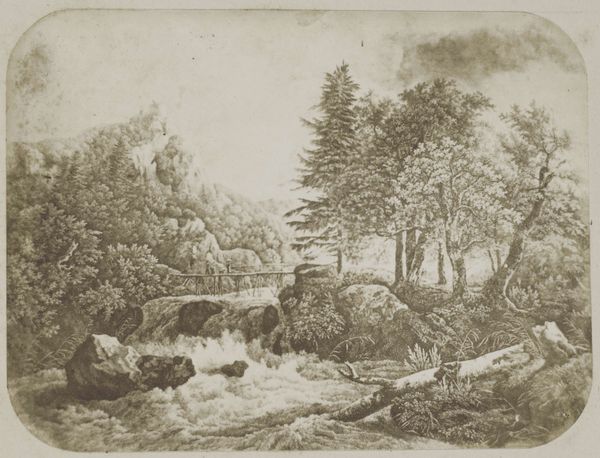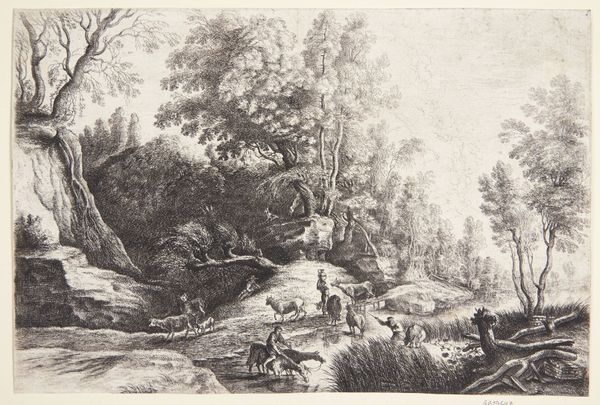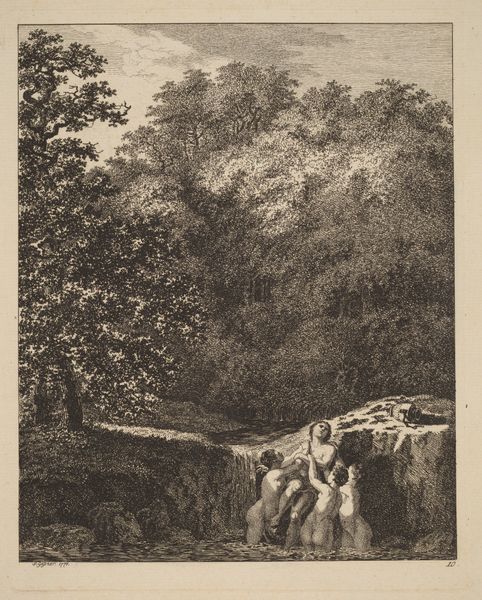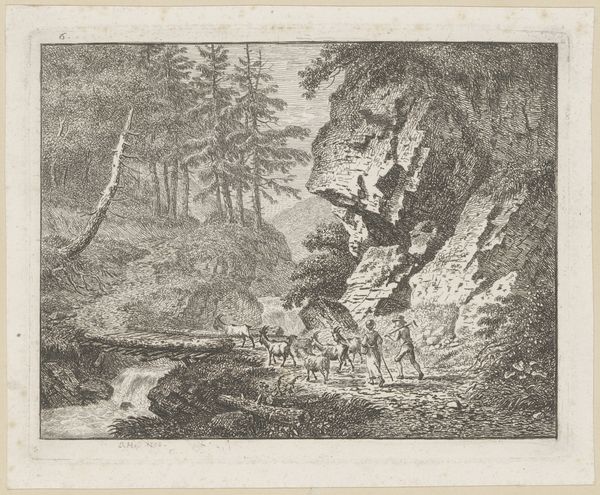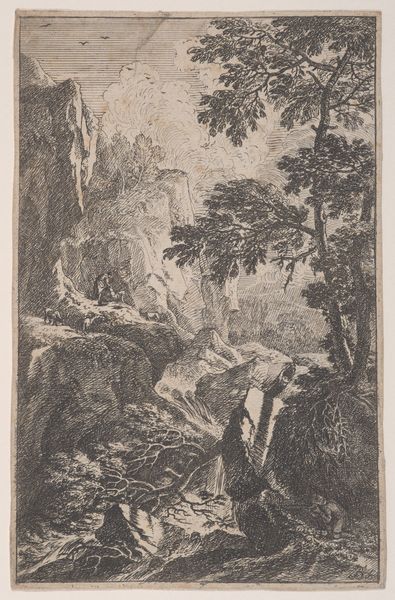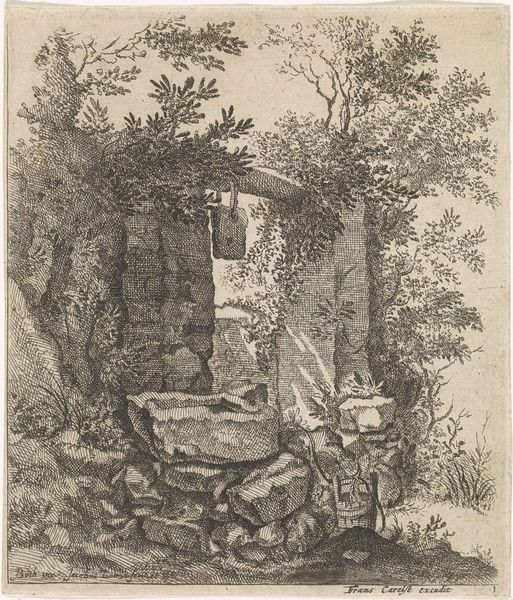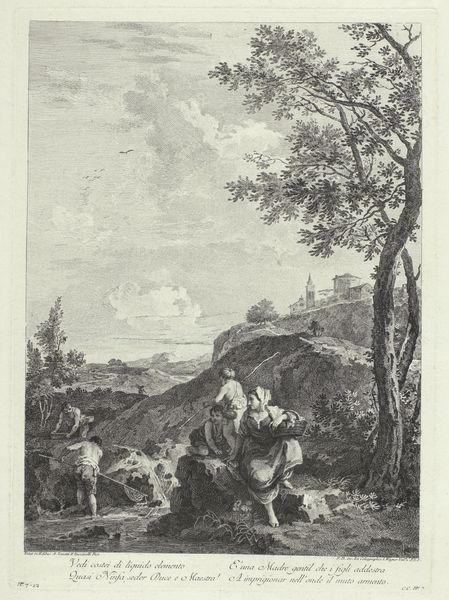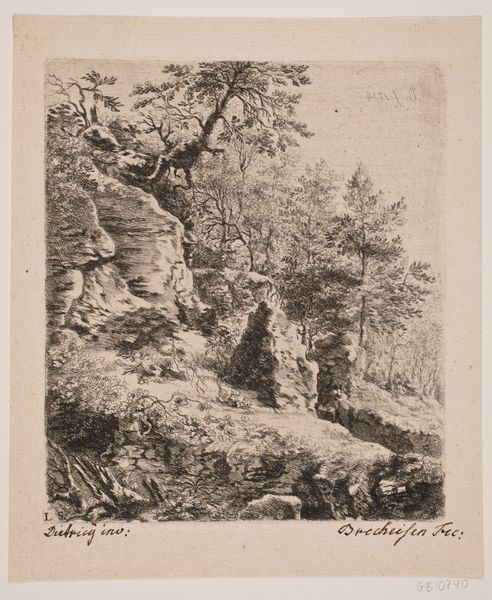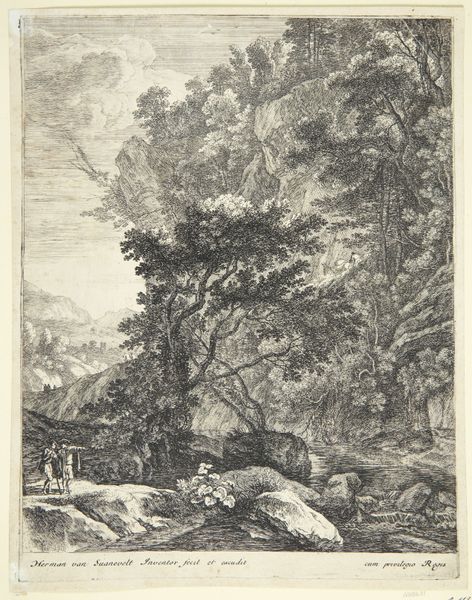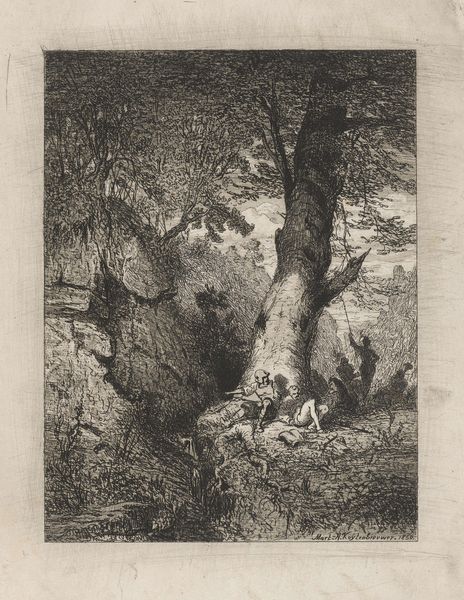
Sentier du Tambourin, Ile de Noirmoutier 1836 - 1895
0:00
0:00
drawing, print, etching, dry-media
#
tree
#
drawing
# print
#
etching
#
old engraving style
#
landscape
#
dry-media
Dimensions: Sheet: 8 3/4 × 6 1/4 in. (22.2 × 15.9 cm)
Copyright: Public Domain
Curator: This etching and dry-media print is titled "Sentier du Tambourin, Ile de Noirmoutier," created sometime between 1836 and 1895 by Tancrède Abraham. Editor: A densely packed composition! The somber grayscale imbues the scene with a sense of solitude, almost melancholy. Look at the tonal gradations created through hatching! Curator: Indeed. Note how the winding path, or "sentier," acts as a guiding visual element. Historically, landscapes became increasingly popular during the 19th century, reflecting a shift towards appreciating nature and pastoral settings outside burgeoning urban environments. Editor: The path certainly serves that purpose. I find myself intrigued by the density of marks, especially the variations achieved by the artist, producing highly contrasted forms and light gradations that emphasize depth. The eye oscillates in this visually charged scene. Curator: This Isle of Noirmoutier held strategic importance over centuries as a defensive position for maritime routes and naval operations and then becoming an epicenter for salt production. Artistically, such detailed landscape prints found a ready market among travelers eager for souvenirs of places visited. Editor: Interesting. Even devoid of overt color, the landscape is very textural, emphasizing a stark and direct appreciation for organic formations. It is also rather interesting to think that prints could be "consumed" like souvenirs, like postcards of our time, although it also begs the question of mass production of prints… Curator: That tension, between artistic expression and the growing print market, definitely shaped how artists like Abraham approached such work. It catered to a rising middle class and a taste for picturesque views. Editor: Looking closely at the visual encoding helps to contextualize such production processes. It also enhances how the content carries a historical, artistic language within its intricate details. Curator: Precisely, by combining both the formal characteristics and socio-historical context, the scene's artistic resonance achieves a more comprehensive understanding. Editor: Yes, analyzing both aspects allows for richer exploration of visual culture during its production and enduring reception today.
Comments
No comments
Be the first to comment and join the conversation on the ultimate creative platform.
